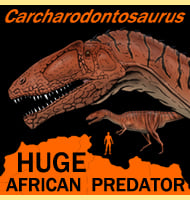Chilesaurus
In Depth Chilesaurus is a very exciting find, and not just because it was the first Jurassic aged dinosaur to be discovered in Chile. Chilesaurus is a theropod dinosaur, yet there is no doubt that Chilesaurus was a plant eater, and not a carnivore like most other theropods were. Firstly the teeth of spatulate and … Read more
